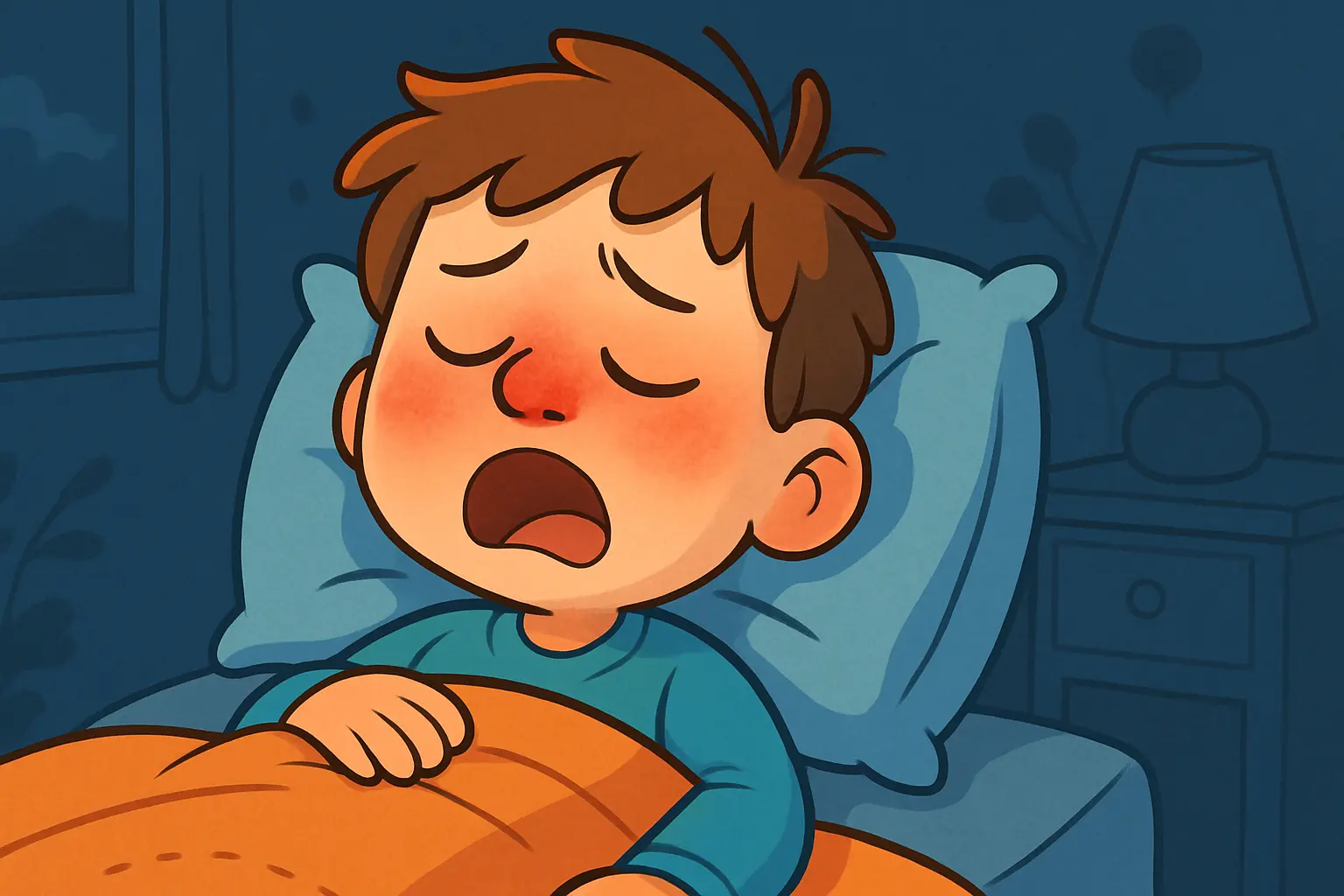Children's Nasal Congestion and Sleep: How Allergies Impact Rest
Nasal congestion in children, often caused by allergies or sinus issues, can seriously disrupt sleep.
Blocked nasal passages lead to mouth breathing, louder snoring, and fragmented sleep, which may affect mood, attention, and growth.
Causes of Nasal Congestion in Children
- Seasonal allergies (pollen, mold)
- Chronic rhinitis or sinus infections
- Enlarged adenoids or tonsils
- Environmental triggers (dust, pet dander, smoke)
SnailSleep AI monitoring shows that children with nasal congestion experience 30–35% more snoring events than children without congestion.
Data Snapshot: Nasal Congestion vs. Snoring
| Age Group | % Snoring Nights | % Mouth Breathing | Avg. Sleep Latency (min) |
|---|---|---|---|
| 3–5 years | 14% | 40% | 18 |
| 6–8 years | 16% | 45% | 20 |
| 9–12 years | 12% | 38% | 17 |
Why Nasal Congestion Affects Sleep
- Airway obstruction → mouth breathing → louder snoring
- Fragmented sleep → less deep sleep, impaired learning and memory
- Reduced oxygen efficiency → micro-arousals and daytime fatigue
- Behavioral impact → irritability, attention deficit
Strategies to Improve Sleep for Congested Children
- Treat allergies — antihistamines, saline sprays, or allergist consultation
- Maintain clean sleeping environment — HEPA filters, dust-free bedding
- Encourage nasal breathing — positional therapy or gentle exercises
- Monitor sleep patterns — SnailSleep tracks snoring and breathing for early intervention
Case Example: Liam, Age 7
Liam snored nightly during spring due to pollen allergies.
Using nasal sprays, HEPA filters, and SnailSleep tracking, his snoring intensity reduced by 40%, and daytime focus improved.
Related Articles
- Mouth Breathing in Sleep: Hidden Cause of Chronic Snoring
- Mouth Breathing in Children: Risks for Sleep and Development
- Late Bedtimes in Children: Impacts on Sleep and Snoring

